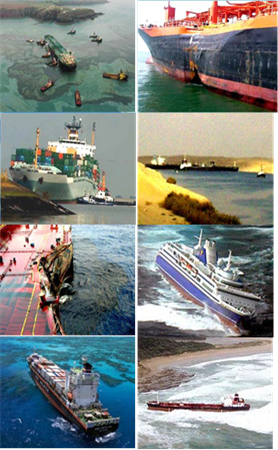IACS Recommendation for the Operation of Shore based Emergency Response Service
IACS has published Recommendation No.145 for the operation of shore-based emergency response services which can be used by owners/managers. The recommendation aims to provide technical assistance to ship casualties by assessing damage stability and residual longitudinal strength. The recommendation also aims to assist ship owners and managers in choosing an emergency response service provider and achieving compliance with the relevant national and international regulations and guidelines mentioned below:
- MARPOL Annex I, Regulation 37 - Shipboard oil pollution emergency plan (SOPEP)
- MARPOL Annex II, Regulation 17 - Shipboard marine pollution emergency plan for noxious liquid substances (SMPEP)
- Oil Pollution Act (OPA 90), CFR 155.240 - Damage stability information for oil tankers and offshore barges
- ISM Code, Regulation 8 - Emergency preparedness
- SOLAS, Chapter II-1, Part B-1, Regulation 8-1 - System capabilities and operational information after a flooding casualty on passenger ships (ERS optional)
- MSC Circular 1400 - Guidelines on Operational Information For Masters Of Passenger Ships For Safe Return To Port By Own Power Or Under Tow (Optional)
Key recommendations for operation for shore based ERS facility under IACS
The key recommendations for operation from IACS are that emergency response service providers should:
- be available 24 hours a day, i.e. all year round
- be available within two hours of being activated to input details of the conditions of the ship; and within one hour for passenger ships (in accordance with MSC.1 /Circ. 1400)
- have a dedicated means of initiating a response such as an emergency phone number
- have a dedicated response facility and back-up location capable of carrying out stability and global strength calculations at all times
- have at least two team members responding to any emergency who are qualified to undertake stability and ship strength calculations
- provide team member training and carry out regular drills and exercises
- have pre-prepared ship models that are validated against the supplied ship information
- have stable and rigorously-tested software capable of calculating stability and strength for flooding, oil outflow, grounding and time and tide
- have additional 2D section modelling software.








